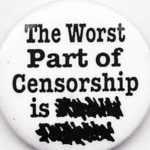 Women, internet and sexuality – Put sex and new technology together and you’ll always get waves. Victorian societies were scandalised by the arrival of the telephone because women –who were chaperoned at all times– could potentially talk with suitors in private.
Women, internet and sexuality – Put sex and new technology together and you’ll always get waves. Victorian societies were scandalised by the arrival of the telephone because women –who were chaperoned at all times– could potentially talk with suitors in private.
Over the last decade, the internet has been censored and content regulated for a multitude of reasons and the principal reason cited by governments across all geopolitical spectrums has been sex – or “harmful sexual content”.
What is sexual content on the internet? The proliferation of sexual content on the internet and the considerable size of the pornography market online is a concern to lots of different groups. However while the online adult sex industry accounts for 12% of web pages, the internet has also been used to express and explore a range of sexual experiences, relationships and content that cannot be considered “harmful”.
* Information about sexual health such as breast cancer prevention
* Information on reproductive health and contraception
* Sex education for young people including helping parents and children talk
* Networks on combatting sexual violence such as the UN’s campaign to Say NO – UNiTE to end violence against women
* Sharing knowledge and information on sexuality and building communities such as by lesbians and transgendered people who meet online in countries where homosexuality is prohibited by law or culture eg Lebanon and South Africa
* Expressing one’s own sexuality on your own terms. In India, online chatting and flirting gives young women a sense of mobility and freedom that doesn’t always exist in the offline world where they are restricted in what they wear and who they can talk to.
These are all part of the basket of sexual content on the internet – and they are all very important to people’s right to freedom of expression and right to information. Especially for people who have little access to resources, rights and spaces in the “off-line” world.
Read the full issue paper here in EnglishDownload
